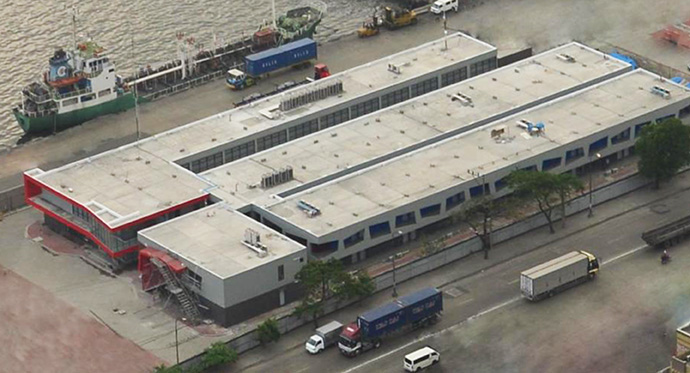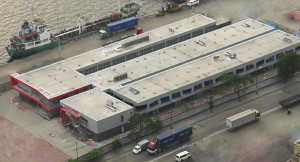

Domestic shipping lines are asking Manila North Harbour Port, Inc. (MNHPI) to put on hold implementation of the newly installed automated gate system at North Port until the facility’s truck holding area is completed to avoid truck queuing.
Philippine Liner Shipping Association (PLSA) executive director Rona Gatdula told PortCalls in text messages on Nov 10 that truck queues have appeared from Pier 16 to Smokey Mountain since MNHPI imposed the truck system on November 9.
MNHPI’s consolidated gate module aims to align the gates process to the new terminal operating system to be implemented at the port early next year. The system automates in-gate and out-gate activities, real-time capture of truck time stamps, and automated validation of the cargo acceptance receipt (CAR) and gate pass.
In a presentation to stakeholders last October, North Port operator MNHPI said the new system “allows for proper planning of yard operations” and identifies trucks and containers to be moved before they enter the yard. Thus, transactions can be anticipated and activities easily assigned to specific equipment.
Under this process, MNHPI issues at the pre-gate booths a truck visit slip that contains information on the truck, driver, container, and weight, and which also serves as parking stub.
Gatdula said the new system is restricting flow of truck traffic in and out of the pier, particularly in the marine slip way where terminals intersect. She added that while there are four weighing stations, there is only one gate entry to the port area. Moreover, she said the existing MNHPI CAR program has been “restrictive even before, such that the implementation of truck slips constrained truck entry to the port even more.”
MNHPI chief executive officer Richard Barclay, in a text message to PortCalls on Nov 10, said they “did have some queuing at the weighbridges where we were testing and upgrading truck/driver identification process,” but that the situation has “now normalized.”
“Meantime, we continue to monitor to minimize any disruption if trucks (are) bunching,” he added.
Gatdula in a text to PortCalls on Nov 13 acknowledged there may be less truck queueing now that MNHPI has made some adjustments.
In their earlier meeting with Philippine Ports Authority and MNHPI officials, Gatdula explained they have taken issue with the new policy which they claimed would sow confusion as the infrastructure for the truck holding area remains incomplete.
She added that slots at the truck holding area have a moving target of completion, and that available truck slots as of November 9 was only 184. By December 21, available truck slots would be 221 and by January, 379.
Gatdula said the port operator should have “waited (until) January 1 because right now we are into peak season because of the holidays.”
She cited the case of one PLSA member that supposedly left North Port with only 50% of the vessel utilized because many containers failed to reach the slip in time to be loaded. With the new system, she added that “even hustling trucks passing through are charged with parking fee.”
Gatdula said the North Port truck identifier scheme launched in July is one policy though that the PLSA has no issue with.
MNHPI earlier told PortCalls that to automate truck operations within the terminal, it was closely coordinating with port truckers, in particular the Inland Haulers and Truckers Association, on the requirement to have their trucks display plate numbers on both sides and on top. This is to allow the gantry crane operator to identify the truck positioned below, and the reach stacker operator to know if it is pulling out a container from the right truck. Manila’s international ports already use the same system for easier truck identification.
Gatdula said they are not opposed to the newly launched truck management system as long as it is “properly coordinated.”– Roumina Pablo




